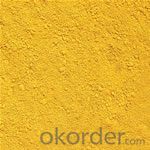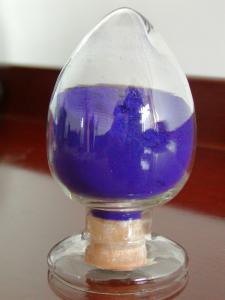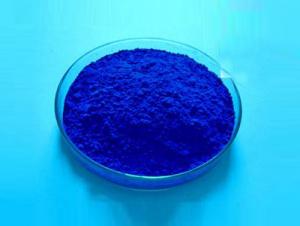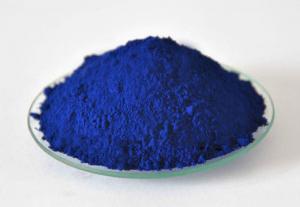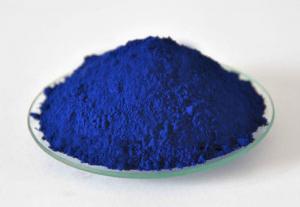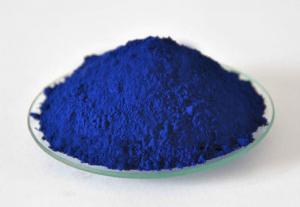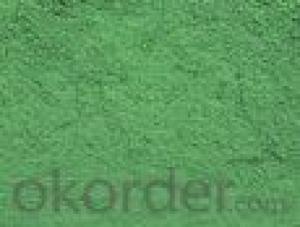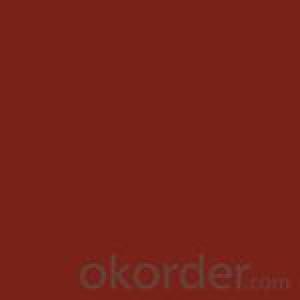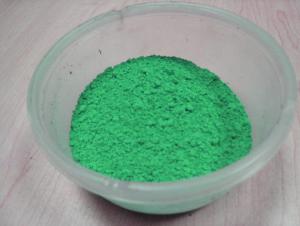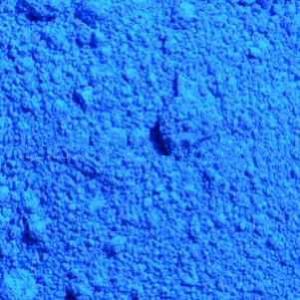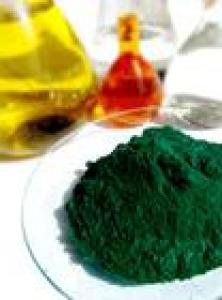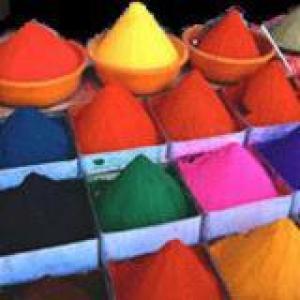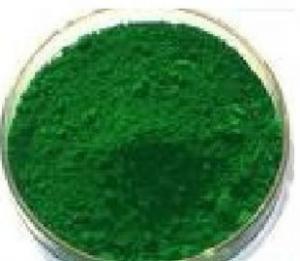Iron oxide yellow 810
- Loading Port:
- China Main Port
- Payment Terms:
- TT OR LC
- Min Order Qty:
- -
- Supply Capability:
- -
OKorder Service Pledge
OKorder Financial Service
You Might Also Like
Quick Details
· CAS No.: 51274-00-1
· Other Names: ferric oxide yellow
· MF: Fe2O3
· EINECS No.: 257-098-5
· Place of Origin: China (Mainland)
· Usage: Ceramic Pigments, Coating Pigment, Cosmetic Pigment, Ink Pigments, Plastic & Rubber Pigment, Leather Pigments, paint and coating
· Model Number: 810
· Type: Iron Oxide
· Style: Inorganic Pigment
· product: iron oxide yellow pigment 810
· model: 810
· style: inorganic pigment
· color index: P.Y.42(77492)
· grade: industrial grade
· tinting strength: 95-105
· Process: wet method
· appearance: yellow powder
· Certificate: ISO9001
Packaging & Delivery
Packaging Details: | 25kgs/bag(colored valve bag/craft paper compound bag/plastic woven bag lined with plastic film/); 500kg or 1000kg big bags; 12MT/20'FCL, on wooden pallet; iron oxide yellow pigment |
Delivery Detail: | Within 2weeks after receiving the deposit or L/C |
Specifications
1 iron oxide yellow powder
2 good covering ability and weather resistance
3 fine dispersion
4.20years factory
1. Properties:
Strong tingting strength, excellent coverage.
Good dispersion.
Good weatherability.
2. Specifications:
Item | Index |
Primary color |
|
Diluted color |
|
Iron content (Fe2O3) 105℃ drying%≥ | 86 |
Fineness (325 mesh wet sieve residue)%≤ | 0.3 |
Oil absorption, g/100g | 25-35 |
Moisture & 105℃ volatile% | 0.3 |
Water solubles% ≤ | 1.0 |
Water suspended matter PH value | 3-7 |
Relative tinting strength (compared with standard sample%) ≥ | 100±5 |
3. Application:
a. paint, coating, plastics, rubber, printing ink industries.
b. The construction materials: concrete, bricks, pavig-blocks, colorful tiles, ect.
4. Packing:
Net weight 25 kg in craft paper bag or knitting bag with plastic liner or as per clients' request. 13 MT/20'FCL
- Q: I need to find powdered paint or pigment that I can throw, for some photographs.Preferably cheap, and that wouldn't stain skin.I've looked into powder paint, though this tends to stain skin for about a week.Thanks :)
- There are diverse varieties of eyeshadows, which means diverse finishes. Matte, working example, would be very, very centred interior the colour, wherein as a lustre will reveal up sheer, and additionally you will possibly be able to barley get any precise pigment out of it. MAC paint is for a base, or primer on your eye lids, which means you will possibly be able to placed that on until now you place any eye liner, shadow, pigment, etc. based on the colour paint you make the main of, it would strengthen or tone down and eye shadow or pigment then you definately definately challenge on the lid. Pigment is a very, very centred loose powder. You superb want a tiny, tiny pinch of it, and the containers they arrive in, circulate a verrrry sturdy distance. The purpose persons customarily use pigments as a shadow alternative, may be in view that the the two MAC does now not deliver the precise colour of the paticular pigment in a shadow, or they are applying it to extend shadows, or finally, they are mixing it with shadows to create diverse colors. desire that's assisting.
- Q: What is the difference between dyes and pigments? Could you give some examples of each one please.
- Dye is used to change the color of things, like cloth. A pigment is like the color and texture of your skin. Or the color in paint.
- Q: What is better, Mac eye pigments or the regular eyeshadow? Also, has anyone tried the mixing medium solution?
- The pigments are purer colors that are MUCH more intense and longer lasting. I've got it in two colors. It's great.
- Q: I am about to purchase a bunch of MAC pigments and I have noticed that they all look glittery, is this just the kind that i am looking at? I know they are versatile, so that is why i want to buy them. And it seems as though they will last longert than eyeshadow...
- I use MAC pigments. MAC pigments are just that- pigment. They are highly concentrated loose color. I use them as eyeshadow, but they're not the same thing as eyeshadow. As I said, they're highly concentrated, so a little goes a long way. MAC pigments cost like $20 each, but that little jar will last you a LONG time. You can use pigments for just about anything. For eyes, lips, cheeks, highlighting, contouring, etc. Pigments are what they use to make eyeshadow, blush, lip gloss, etc., of course in those cases they just add extra additives into it. The pure pigment really lets you control it. A simple blue can be a light wash of color or it can be an intense vivid blue. You can't achieve that with eyeshadow, so that's why I'm a loyal pigments user. Also, if you don't have it, I really suggest getting good brushes. Some people try to use sponge applicators for pigments, and it does NOT work. The loose pigments really require good brushes. Also be prepared for fallout! That, of course, means when some flecks of pigment go onto your cheeks from the loose powder. Have a powder brush ready, just brush away the fallout, and that's that. Some people are annoyed by it, but I prefer the control of color over having to deal with fallout. Anyway yes some of them are glittery, but some of them can be very matte. Are you looking online or in the stores? I suggest going into the stores and asking which ones are matte, or trying some out while you're there. Some are shimmery, there are even pure glitter pigments, but some are also matte and non-glittery. Go to a store and see for yourself. As you said, they are very versatile, they last a long time, and to me it's so much better than eyeshadow.
- Q: are photosynthetic pigments separated based on their polarity or based on their molecular structure?Thanks
- Molecular structure... Chlorophylls are greenish pigments which contain a porphyrin ring. This is a stable ring-shaped molecule around which electrons are free to migrate. There are several kinds of chlorophyll, the most important being chlorophyll a. This is the molecule which makes photosynthesis possible, by passing its energized electrons on to molecules which will manufacture sugars. All plants, algae, and cyanobacteria which photosynthesize contain chlorophyll a. A second kind of chlorophyll is chlorophyll b, which occurs only in green algae and in the plants. A third form of chlorophyll which is common is (not surprisingly) called chlorophyll c, and is found only in the photosynthetic members of the Chromista as well as the dinoflagellates. The differences between the chlorophylls of these major groups was one of the first clues that they were not as closely related as previously thought. Carotenoids are usually red, orange, or yellow pigments, and include the familiar compound carotene, which gives carrots their color. These compounds are composed of two small six-carbon rings connected by a chain of carbon atoms. As a result, they do not dissolve in water, and must be attached to membranes within the cell. Carotenoids cannot transfer sunlight energy directly to the photosynthetic pathway, but must pass their absorbed energy to chlorophyll. For this reason, they are called accessory pigments. One very visible accessory pigment is fucoxanthin the brown pigment which colors kelps and other brown algae as well as the diatoms.
- Q: (After the fifteenth century)
- Pigment is color in powder form. An example is lamp black; it was first made from the soot of kerosene lamps ground fine. Binder is a substance used to hold pigment together and make it adhere; in the previous example, linseed oil would be the binder for the lamp black pigment. Vehicle is a medium acting as a solvent, carrier, or binder for paint; turpentine or mineral spirits would be a vehicle but so would linseed oil as well to help dilute the paint and help it cover a large area. Hope that helps and thanx.
- Q: Can someone describe the role of accessory pigments in photosynthesis?
- help the primary pigments gather sunlight and adds color to the plant
- Q: Pleaseeeeee answer A.S.A.P Pleaseeee! Are pigments haram?
- Most pigments for dyes and paints come from plants or minerals. What exactly do you need? The second part of your question about haram, needs some explanation, too.
- Q: the absorption spectrum and the range of light reflected by each
- A okorder /... gives the spectra (Action and Absorption)
- Q: Why is it important for a plant to have more pigments than just chlorophyll?
- If the plant only has chlorophyll, it is only able to absorb and use the wavelengths of light that correspond to chlorophyll, which is really limiting. Having other pigments allows it to use more wavelengths of light, which is more efficient.
Send your message to us
Iron oxide yellow 810
- Loading Port:
- China Main Port
- Payment Terms:
- TT OR LC
- Min Order Qty:
- -
- Supply Capability:
- -
OKorder Service Pledge
OKorder Financial Service
Similar products
Hot products
Hot Searches
Related keywords

